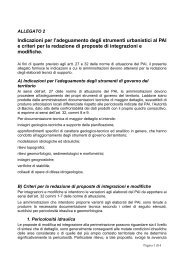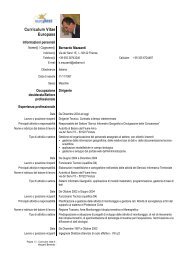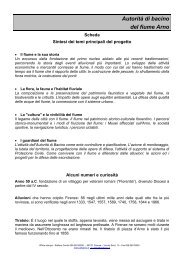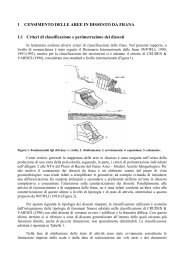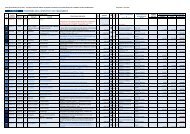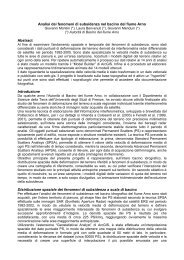11. Confidence Intervals for Flood Return Level Estimates assuming ...
11. Confidence Intervals for Flood Return Level Estimates assuming ...
11. Confidence Intervals for Flood Return Level Estimates assuming ...
Create successful ePaper yourself
Turn your PDF publications into a flip-book with our unique Google optimized e-Paper software.
226 11 <strong>Flood</strong> <strong>Level</strong> <strong>Confidence</strong> <strong>Intervals</strong>c) Model the correlation structure using a Farima[p, d, q] process, selectthe model orders p and q with Hic (Sect. <strong>11.</strong>4.3).d) Generate a long series from this model (N long 100N data ).e) Add the periodic cycles from 1a). The result is a long series sharing thespectral characteristics, especially the seasonality with the empiricalrecord.f) Extract the annual maxima series.g) Model the correlation structure of the simulated maxima series using aFarima[p max , d, q max ] process, with orders p max and q max selected withHic.2. Model the distribution of the maxima according to the approach usedbootstrap fp : Estimate the parameters of a Gev model from the empiricalmaxima series using Mle (Sect. <strong>11.</strong>2.2).bootstrap sp : Use the empirical maxima distribution as model.3. Generate an ensemble of size N ensemble of maxima series with length N maxwith correlation structure and value distribution from the models built in1 and 2:a) Generate a series {Z i } with the Farima[p max , d, q max ] model from step1f) of length N ensemble N max back-trans<strong>for</strong>m according to 1a) 4 .b) Generate a sample {W i } with length N ensemble N maxbootstrap fp from the Gev model specified in step 2a).bootstrap sp from sampling with replacement from the empirical maximaseries.c) By means of Iaaft {W i } is reordered such that its correlation structureis similar to that of {Z i }. This yields the run-off surrogates{Q i } i=1,...,Nensemble N max.d) Splitting {Q i } i=1,...,Nensemble N maxinto blocks of size N max yields the desiredensemble.Estimating the desired return level from each ensemble member as describedin Sect. <strong>11.</strong>2.2 yields a frequency distribution of return level estimates whichcan be used to assess the variability of this estimator.<strong>11.</strong>5 Comparison of the Bootstrap ApproachesA comparison of the four different bootstrap approaches bootstrap cl , iaaft d ,bootstrap fp , and bootstrap sp , is carried out on the basis of a simulation study.We start with a realization of a known process, chosen such that its correlationstructure as well as its value distribution are plausible in the context of river4 Instead of back-trans<strong>for</strong>ming here, one can Box-Cox trans<strong>for</strong>m the outcome of step 3b) combinethe results with Iaaft as in step 3c) and back-trans<strong>for</strong>m afterwards. This procedure turned outto be numerically more stable.



